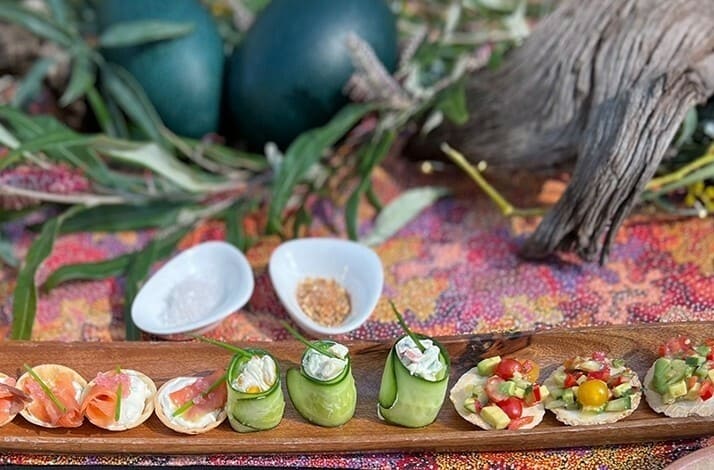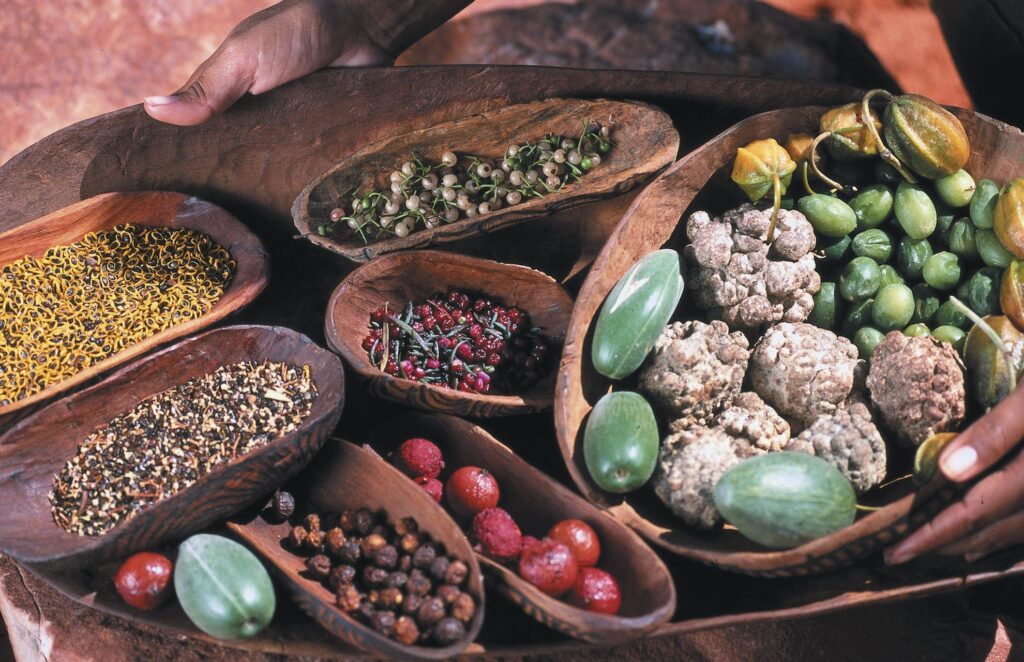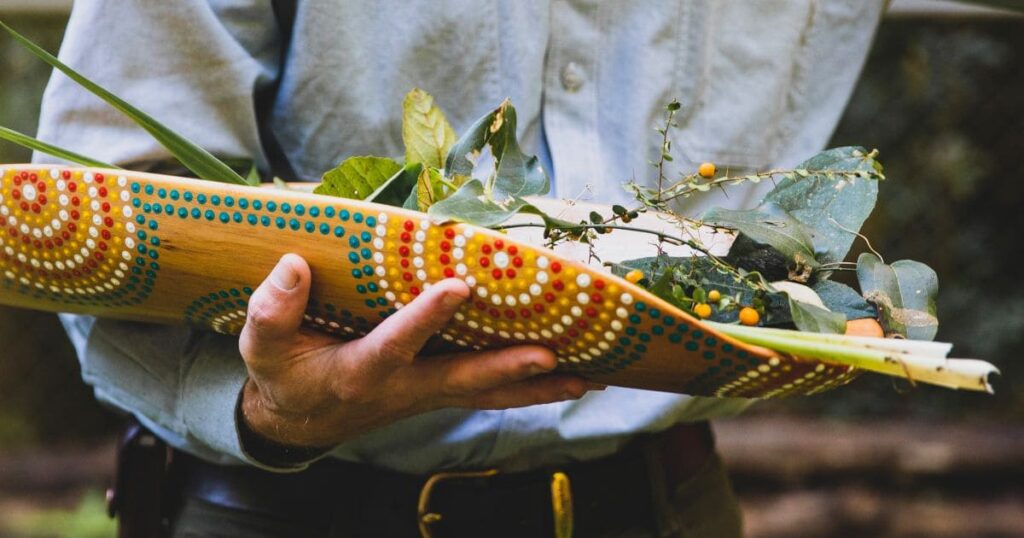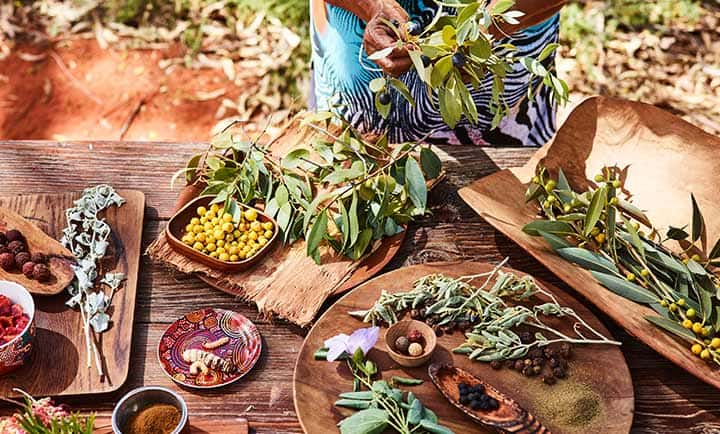
A Bush Tucker Tour offers an extraordinary opportunity to delve into the rich culinary heritage of Australia’s Indigenous peoples. During these tours, participants explore the diverse range of native ingredients used in traditional cooking, learning about their historical significance and sustainable practices. It’s a journey that not only tantalizes the palate but also deepens understanding of Indigenous culture and its connection to the land. From foraging for native fruits to cooking with bush spices, these tours promise to be both educational and delicious. Join us as we explore the highlights of what a Bush Tucker Tour entails, and discover why it should be on your travel bucket list.
What is Bush Tucker?

Bush Tucker refers to the traditional food sources used by Indigenous Australians for thousands of years, encompassing a wide selection of plants and animals native to the Australian landscape. This includes root vegetables, fruits, nuts, and various meats such as kangaroo, emu, and fish. The concept of Bush Tucker extends beyond the food itself; it embodies a Land-to-Table philosophy rooted in sustainability and respect for nature. Indigenous peoples have honed their knowledge of indigenous edible resources through generations, making them invaluable custodians of this rich culinary tradition. During a Bush Tucker Tour, you will gain first-hand insights into foraging techniques, preparation methods, and the cultural stories behind each item, allowing you to appreciate the food’s context.
The Structure of a Bush Tucker Tour
A typical Bush Tucker Tour is a well-organized combination of education, application, and tasting experiences. Most tours begin with a guided journey through the bush, where knowledgeable guides help participants identify various native plants and explain their uses in traditional cuisines. This interactive experience often includes hands-on foraging activities, allowing attendees to pick their own ingredients. After foraging, the tour usually transitions to a cooking session where participants learn how to prepare the collected ingredients. Some tours culminate in a communal meal, showcasing the dishes that have been created using native recipes. Throughout the tour, storytelling plays a crucial role, with guides sharing their personal experiences and the broader history of the land and its people. It’s not just about tasting Australians’ indigenous foods; it’s about fostering respect and understanding for the culture behind it.
Highlighting Native Ingredients
One of the most exciting aspects of a Bush Tucker Tour is the opportunity to learn about and taste unique native ingredients. Below is a list of some popular components that are often featured during tours:

-
- Wattleseed: Often ground into flour, it is used in baked goods and has a nutty, chocolatey flavor.
- Bush Tomatoes: These small fruits are rich in antioxidants and offer a rich, tangy taste.
- Kangaroo: A lean meat that is not only delicious but also a sustainable food source.
- Finger Lime: These small, citrus fruits burst with juice and are perfect for garnishing dishes.
- Macadamia Nuts: Indigenous to Australia, these nuts are prized for their rich flavor and are widely used in cooking.
Each ingredient is steeped in cultural significance and history, reinforcing the deeper connection between food and Indigenous identity. By engaging with these flavors, participants gain a palpable understanding of how these ingredients can influence contemporary Australian cuisine.
The Cultural Significance of Bush Tucker
The practice of gathering and preparing Bush Tucker is laden with cultural significance for Indigenous Australians. Each ingredient and dish tells a story, reflecting the relationship Indigenous communities have with the environment. Traditionally, food gathering was a communal activity, imbued with rituals and practices that reinforced kinship bonds and community ties. The knowledge surrounding Bush Tucker is often passed down through generations, making it an essential thread in the fabric of Indigenous heritage. Culinary practices tied to the indigenous land also emphasize the importance of sustainability and custodianship, as different ingredients are harvested with respect to seasonal cycles and animal behavior. Today, there is a growing movement to integrate these practices into modern cuisines, thereby enriching Australia’s culinary landscape with deep-rooted traditions.

Why You Should Experience a Bush Tucker Tour
Participating in a Bush Tucker Tour is more than just a culinary journey; it’s an immersive experience that promotes awareness and appreciation for Indigenous culture. With the growing global interest in sustainable and ethical eating, these tours bridge the gap between gathering food and understanding the origins of what we consume. For food enthusiasts, it’s a unique chance to taste indigenous flavors and learn how they can be integrated into modern cooking. Additionally, these tours often operate in stunning natural settings, providing opportunities to connect with the Australian bush in a way that few experiences offer. Lastly, engaging with Indigenous guides fosters greater respect for their stories and contributions to Australia’s identity, making for a meaningful travel experience.
Conclusion
In conclusion, a Bush Tucker Tour is a wonderful synthesis of culinary delight, cultural education, and respect for nature. Engaging with the land and its historical foods can be a profound experience that enriches one’s appreciation for Indigenous cultures. With increasing global emphasis on sustainability, understanding local customs and practices surrounding food is more relevant than ever. If you’re an adventurous eater, a cultural enthusiast, or someone looking to connect with the land, a Bush Tucker Tour promises to be a transformative journey into the heart of Australia’s culinary heritage.
FAQs
It’s advisable to wear comfortable clothing suited for outdoor activities, including sturdy shoes, a sun hat, and sunscreen, as you’ll likely spend time in natural environments.
2. Are children welcome on Bush Tucker Tours?
Yes, many Bush Tucker Tours are family-friendly and offer educational activities suitable for participants of all ages.
3. How long do these tours typically last?
Most tours last between two to five hours, depending on the itinerary, but full-day experiences can also be arranged.
4. Is prior knowledge of Indigenous cuisine required?
No prior knowledge is necessary; the guided tours provide all the information needed to appreciate and understand the context of Bush Tucker.
5. Where can I find these tours?
Bush Tucker Tours are available across Australia, particularly in areas rich in Indigenous history. A quick online search can yield numerous options, often led by Indigenous guides themselves.




